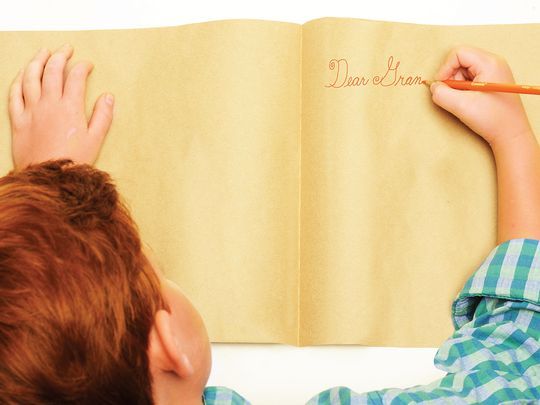Does cursive writing still have cred
My mother, now in her 70s, has beautiful handwriting. As a young girl, I admired and emulated her expressive script, ultimately winning a couple of penmanship awards for my efforts. My mom was proud and so was I.
But with cursive writing instruction in decline since the 1970s in many elementary schools, widespread pride in the almost artistic form of penmanship seems to be waning.
Some say it’s another casualty of technology and an outmoded form of communication. The increased pressure on public school educators to adopt the Common Core State Standards — which don’t require handwriting instruction — is another reason it’s been dropped from curriculums across the country.
Its very survival may depend on the educators, legislators and parents who believe in the ongoing value of cursive writing in a digital age.
The benefits of pen and paper.
Beyond signing birthday cards, endorsing checks and addressing wedding invitations, does cursive writing still have any practical use?
“We feel cursive is essential instruction,” says David S. Lourie, head of St. Anne’s-Belfield School, a pre-school -12 private school in Charlottesville, Va., which begins formal introduction to handwriting with printing in kindergarten and cursive instruction in second grade. “Penmanship is a step along a continuum, from kids playing with blocks and clay. Keyboarding doesn’t replace handwriting.”
Lourie’s belief is bolstered by studies that show early childhood learners benefit from the fine motor skills and cognitive development it encourages. Virginia Berninger, professor of educational psychology at the University of Washington, is a vocal champion of cursive. Her research shows that printing, cursive and keyboarding are each associated with distinct brain patterns.
Berninger followed children in grades two through five and found a connection between cursive writing and increased neural activity associated with creativity, particularly idea generation.
This year, The Walker School, a private school in Marietta, Ga., introduced “Fine Motor Fridays” after receiving teacher feedback that kids in kindergarten through fifth grade were struggling to open water bottles and snacks. Activities include cursive writing, working with magnets and beading. “With the rise of swiping and touch screening, kids’ muscles are undeveloped and their hands are more easily fatigued,” says Megan Nellen, Walker’s Lower School principal. “The more children write, draw and apply pressure to paper with crayons or colored pencils, the more they strengthen their fine motor muscles.”
Nellen says kids must be able to sustain their writing muscle through the school day, comparing it to the ability to run distances. Not all students are getting that type of exercise, however.
Suzi Figueroa, a teacher for 36 years, most recently as a third-grade teacher at Monte Vista Elementary in Phoenix, says her students only receive classroom instruction during the last week of school, once state and district testing has been completed. There’s just enough time to teach kids to sign their names, Figueroa said.
“Back in the day, cursive was an actual course with the expectation that you would achieve a certain level of finesse,” she says. “It was well-valued and the skill was regarded as important. It was fun to teach — almost like an arts class — and the kids couldn’t wait to start. Now the notion is that with word processing, kids don’t need to do it.”
In mid-April, Ohio legislators introduced a bill with bipartisan support to require that cursive writing be taught in all elementary schools. It joins at least six other states with similar laws to protect the practice, including Tennessee, North Carolina, Arkansas, North Carolina, South Carolina and Idaho. Candace Heroy Massey homeschools her two sons, sixth-grader Luke and second-grader Eli, in Blue Ridge, Ga., and requires them to turn in some of their work in cursive.
“My kids are super-fast typists, but I think cursive trains the brain and disciplines them,” she says. “It makes them slow down and make connections as they dip and loop, hook and repeat. They are more aware of the margins and they turn in neater, more organized work as a result.” Massey’s sons recently discovered another plus: a link to history. “When they stood in front of the Declaration of Independence and the U.S. Constitution at the National Archives, they were able to read the documents. They can also read a recipe card written by their grandma.”
 Does cursive writing still have cred
Does cursive writing still have credSource: www.usatoday.com
When there are no words left, the meaning is still preserved.



